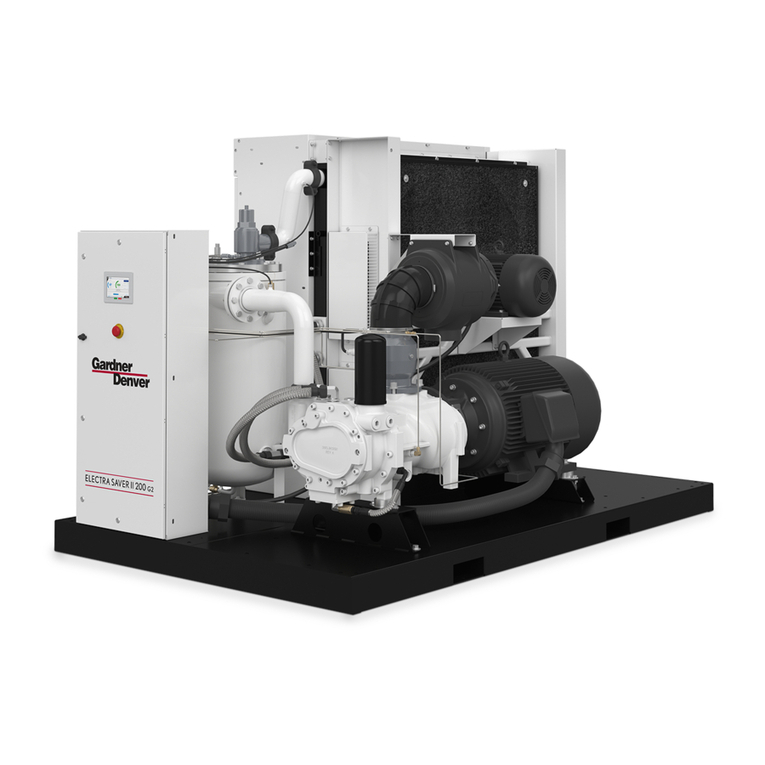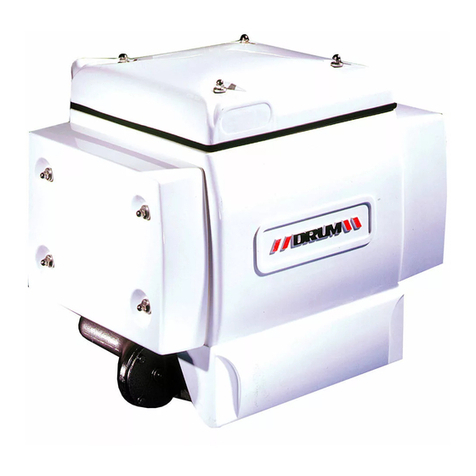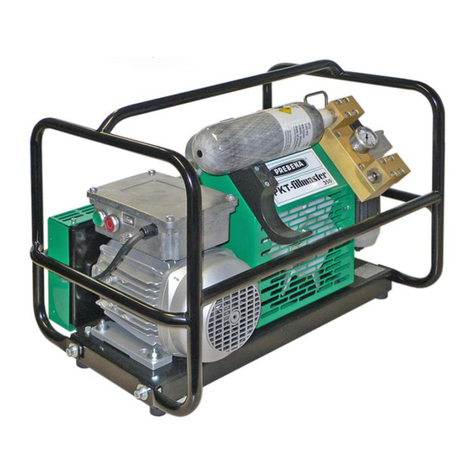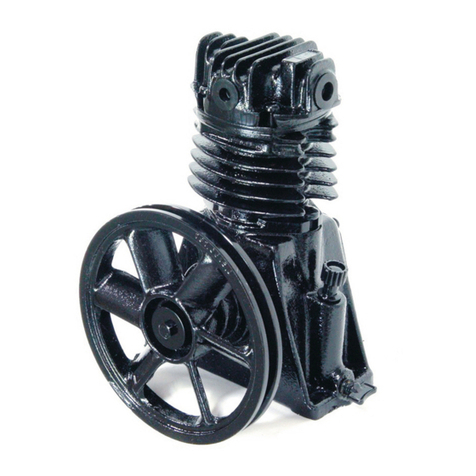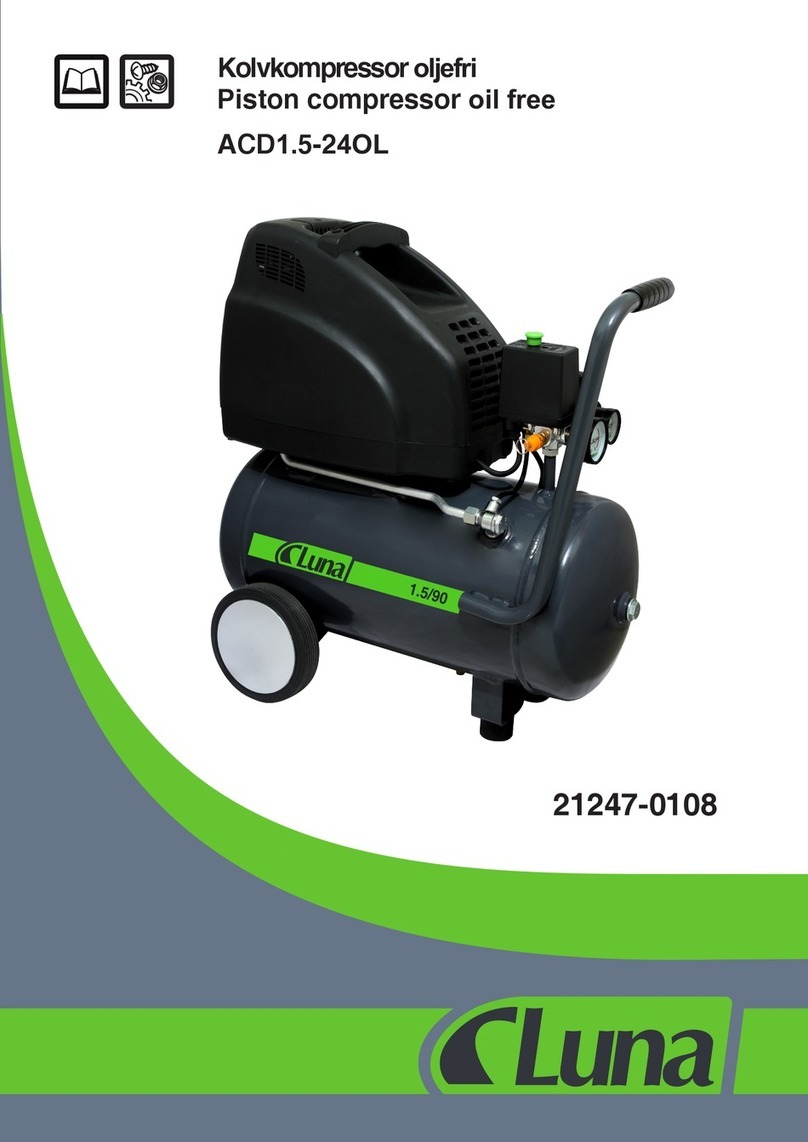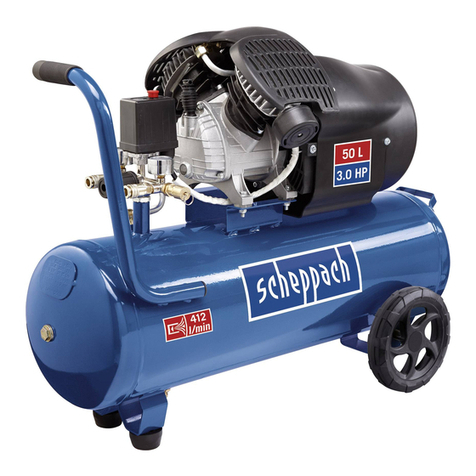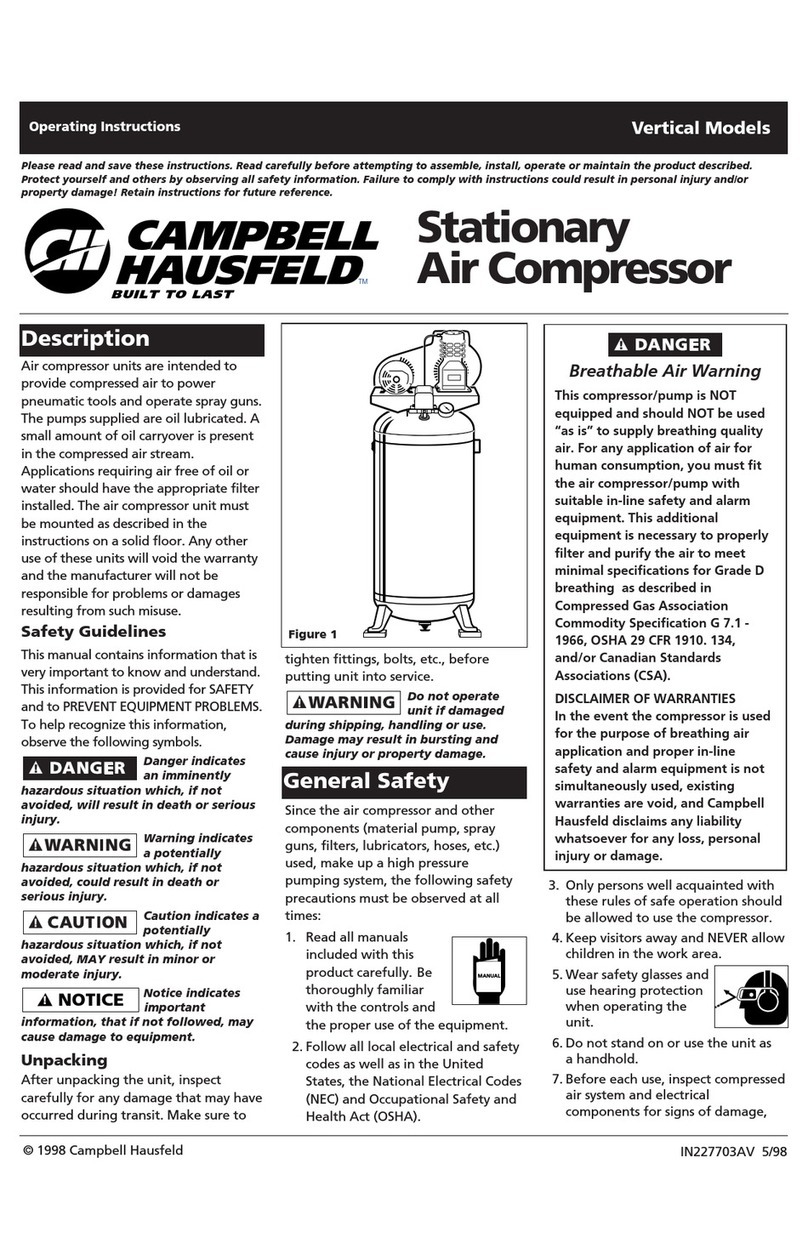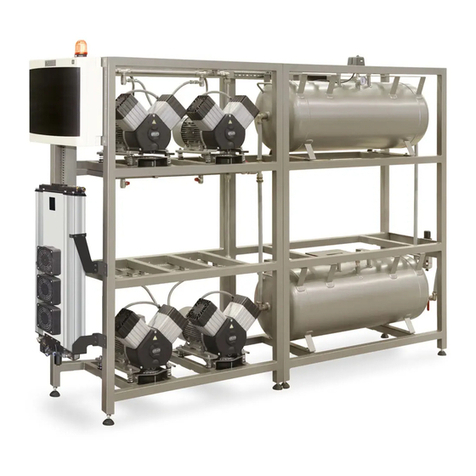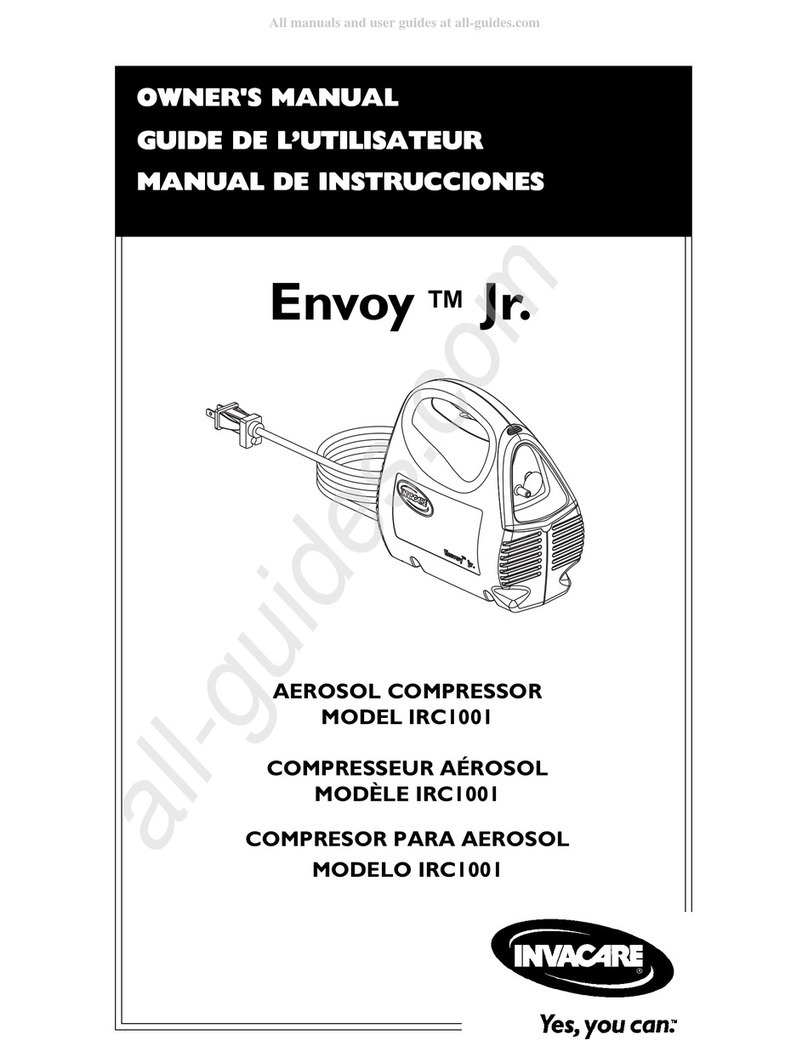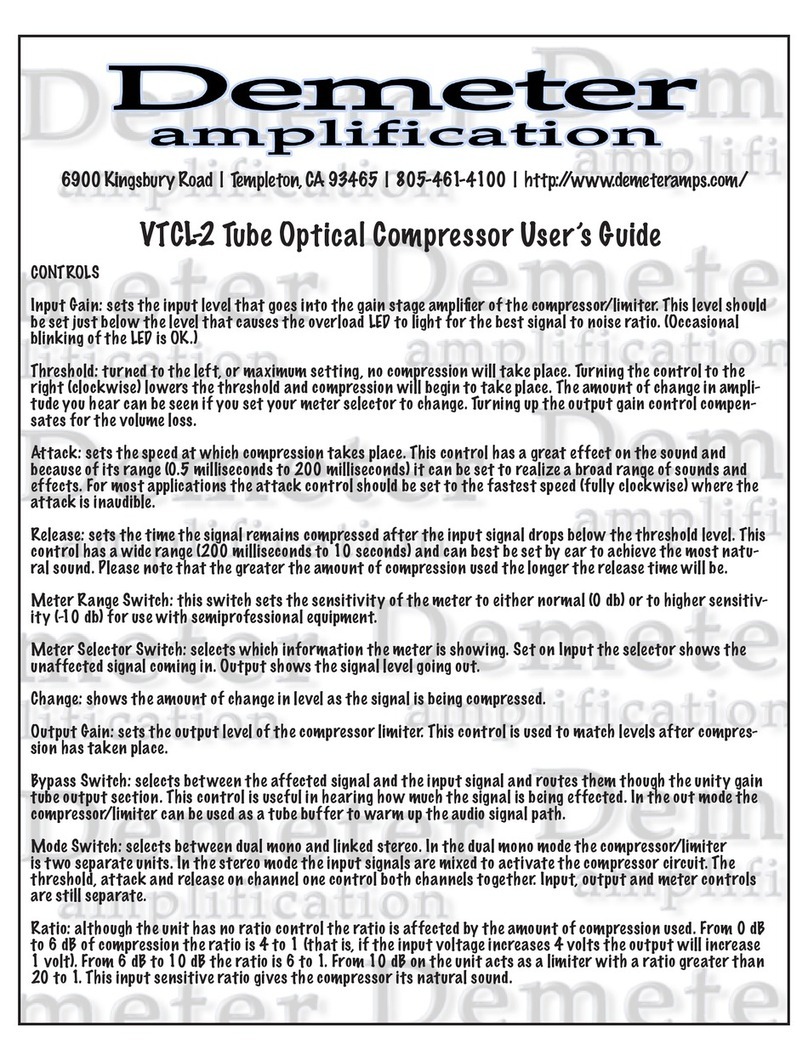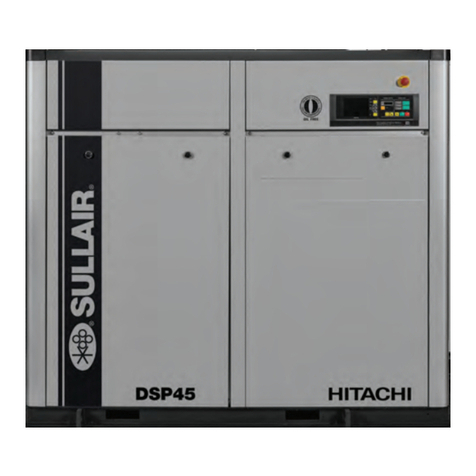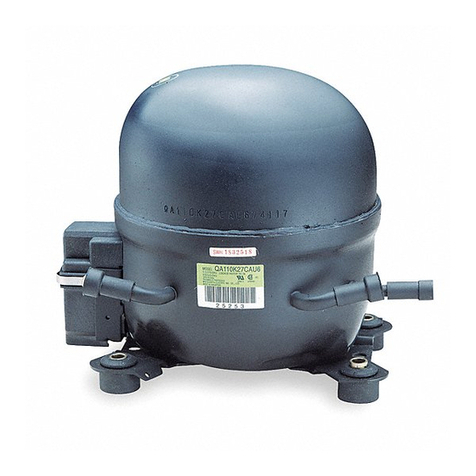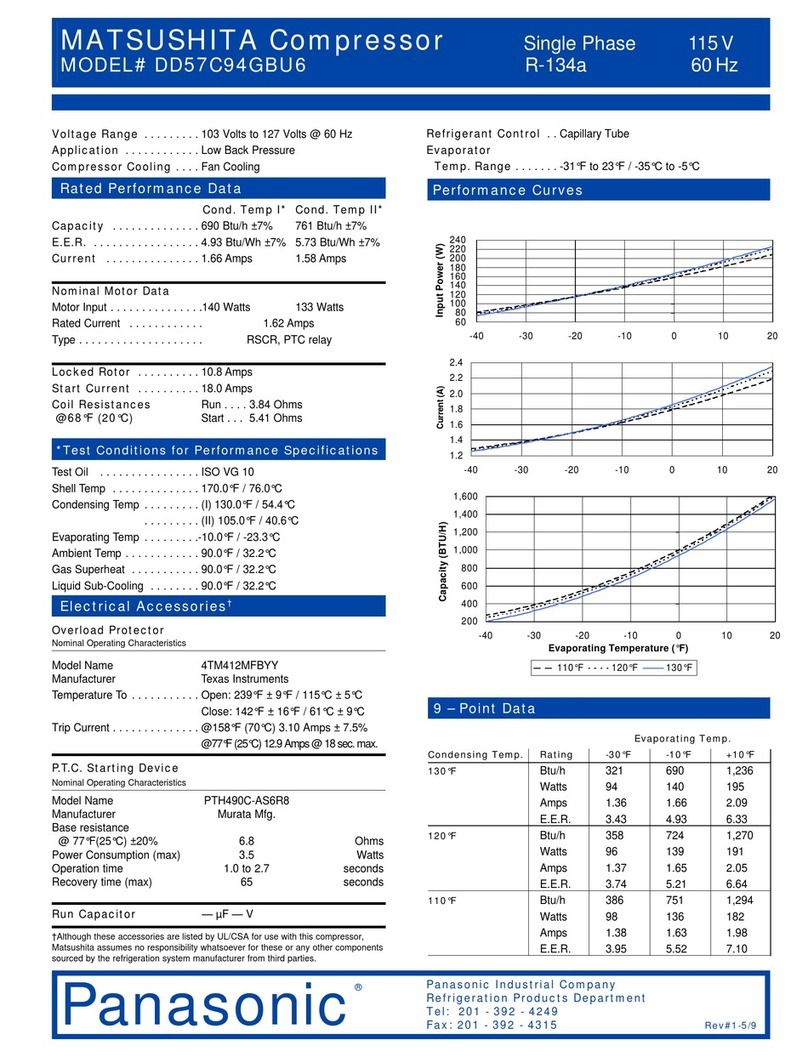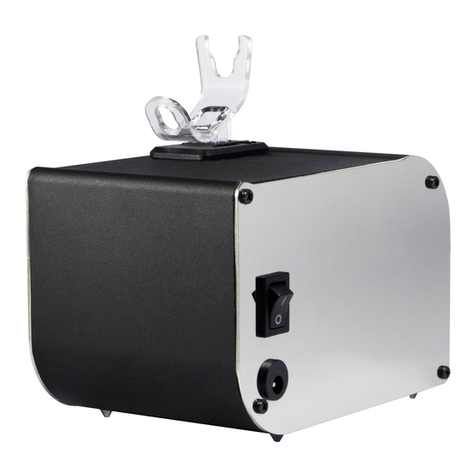
INDEX
13–10–612 Page iv
Acoustic Enclosure 9. . . . . . . . . . . . . . . . . . . . . . . . .
Actuator, Turn Valve 23. . . . . . . . . . . . . . . . . . . . . . .
Addition of Oil Between Changes 36. . . . . . . . . . . .
Aftercooler 10. . . . . . . . . . . . . . . . . . . . . . . . . . . . . . .
Air–Cooled Machine 10. . . . . . . . . . . . . . . . . . . . .
Water–Cooled Machine 11. . . . . . . . . . . . . . . . . .
Aftercooler – Heat Exchanger Water Piping 14. . .
Air Control Components 23. . . . . . . . . . . . . . . . . . . .
Air Filter Vacuum 25. . . . . . . . . . . . . . . . . . . . . . . .
Blowdown Valve 23. . . . . . . . . . . . . . . . . . . . . . . . .
Inlet Valve 23. . . . . . . . . . . . . . . . . . . . . . . . . . . . . .
Minimum Discharge Pressure/Check Valve 24.
Pressure Regulator 23. . . . . . . . . . . . . . . . . . . . . .
Purge Air Valve 23. . . . . . . . . . . . . . . . . . . . . . . . .
Reservoir Pressure Transducer 25. . . . . . . . . . .
Shuttle Valve 23. . . . . . . . . . . . . . . . . . . . . . . . . . . .
Solenoid Valves IVC and IVO 23. . . . . . . . . . . . .
Solenoid Valves TVC and TVO 23. . . . . . . . . . . .
System Pressure Transducer 25. . . . . . . . . . . . .
Turn Valve 23. . . . . . . . . . . . . . . . . . . . . . . . . . . . . .
Turn Valve Actuator 23. . . . . . . . . . . . . . . . . . . . . .
Vibration Switch 25. . . . . . . . . . . . . . . . . . . . . . . . .
Air Ends, Remanufactured i. . . . . . . . . . . . . . . . . . . .
Air Filter 45. . . . . . . . . . . . . . . . . . . . . . . . . . . . . . . . . .
Air Filter Vacuum Switch 25. . . . . . . . . . . . . . . . . . .
Air Filter, Heavy Duty
200 HP Units 46. . . . . . . . . . . . . . . . . . . . . . . . . . .
250 and 300 HP Units 47. . . . . . . . . . . . . . . . . . . .
Air Filter, Heavy Duty – 200 HP
Dust Cup 46. . . . . . . . . . . . . . . . . . . . . . . . . . . . . . .
Filter Element 46. . . . . . . . . . . . . . . . . . . . . . . . . . .
Filter Element Life 46. . . . . . . . . . . . . . . . . . . . . . .
Inlet Screen and Tube 47. . . . . . . . . . . . . . . . . . . .
Air Filter, Heavy Duty – 250 and 300 HP
Dust Cup 47. . . . . . . . . . . . . . . . . . . . . . . . . . . . . . .
Filter Element 47. . . . . . . . . . . . . . . . . . . . . . . . . . .
Filter Element Life 48. . . . . . . . . . . . . . . . . . . . . . .
Inlet Screen and Tube 48. . . . . . . . . . . . . . . . . . . .
AIR FILTERS, SECTION 6 48. . . . . . . . . . . . . . . . .
Air Flow 1. . . . . . . . . . . . . . . . . . . . . . . . . . . . . . . . . . .
Compression Principle 1. . . . . . . . . . . . . . . . . . . . . .
Air Receiver, Auxiliary 10. . . . . . . . . . . . . . . . . . . . . .
Air–Cooled Machine, Aftercooler 10. . . . . . . . . . . .
Air–Cooled Oil Cooler Module 9. . . . . . . . . . . . . . . .
Auto Sentry–ES 25. . . . . . . . . . . . . . . . . . . . . . . . . . .
Automatic Mode Operation 26. . . . . . . . . . . . . . .
Constant Run Mode Operation 26. . . . . . . . . . . .
Control Transformer 25. . . . . . . . . . . . . . . . . . . . .
Emergency Stop 25. . . . . . . . . . . . . . . . . . . . . . . .
Fan Starter 25. . . . . . . . . . . . . . . . . . . . . . . . . . . . .
Low Demand Mode Operation 26. . . . . . . . . . . .
Operation 25. . . . . . . . . . . . . . . . . . . . . . . . . . . . . .
Programming and Setup Instructions 27. . . . . . .
Terminal Strip 25. . . . . . . . . . . . . . . . . . . . . . . . . . .
Auxiliary Air Receiver 10. . . . . . . . . . . . . . . . . . . . . .
Blowdown Valve 22, 23. . . . . . . . . . . . . . . . . . . . . .
Change Procedure, Lubricant 34. . . . . . . . . . . . . . .
Check CN7 (8, 9) 22. . . . . . . . . . . . . . . . . . . . . . . . . .
Cleaning and Draining Oil System 37. . . . . . . . . . .
Clearing Advisories 26. . . . . . . . . . . . . . . . . . . . . . . .
Cold Ambient Operation 36. . . . . . . . . . . . . . . . . . . .
Cold Weather Operation, Installation 11. . . . . . . . .
Compressor 1. . . . . . . . . . . . . . . . . . . . . . . . . . . . . . .
Compressor Capacity Control 22. . . . . . . . . . . . . . .
Compressor Oil Cooler (Radiator Type) 39. . . . . .
Compressor Oil Cooler – Water Cooled
Heat Exchanger 40. . . . . . . . . . . . . . . . . . . . . . .
Compressor Oil Filter 38. . . . . . . . . . . . . . . . . . . . . .
Compressor Oil Separator 42. . . . . . . . . . . . . . . . . .
Inspection 42. . . . . . . . . . . . . . . . . . . . . . . . . . . . . .
Removal for Inspection 43. . . . . . . . . . . . . . . . . . .
Separator Differential Gauging 42. . . . . . . . . . . .
Compressor Oil System 34. . . . . . . . . . . . . . . . . . . .
Control Piping 12. . . . . . . . . . . . . . . . . . . . . . . . . . . .
Controller Display 26. . . . . . . . . . . . . . . . . . . . . . . . .
Clearing Advisories 26. . . . . . . . . . . . . . . . . . . . . .
CONTROLS & INSTRUMENTS, EAU UNITS,
SECTION 4 20. . . . . . . . . . . . . . . . . . . . . . . . . . .


